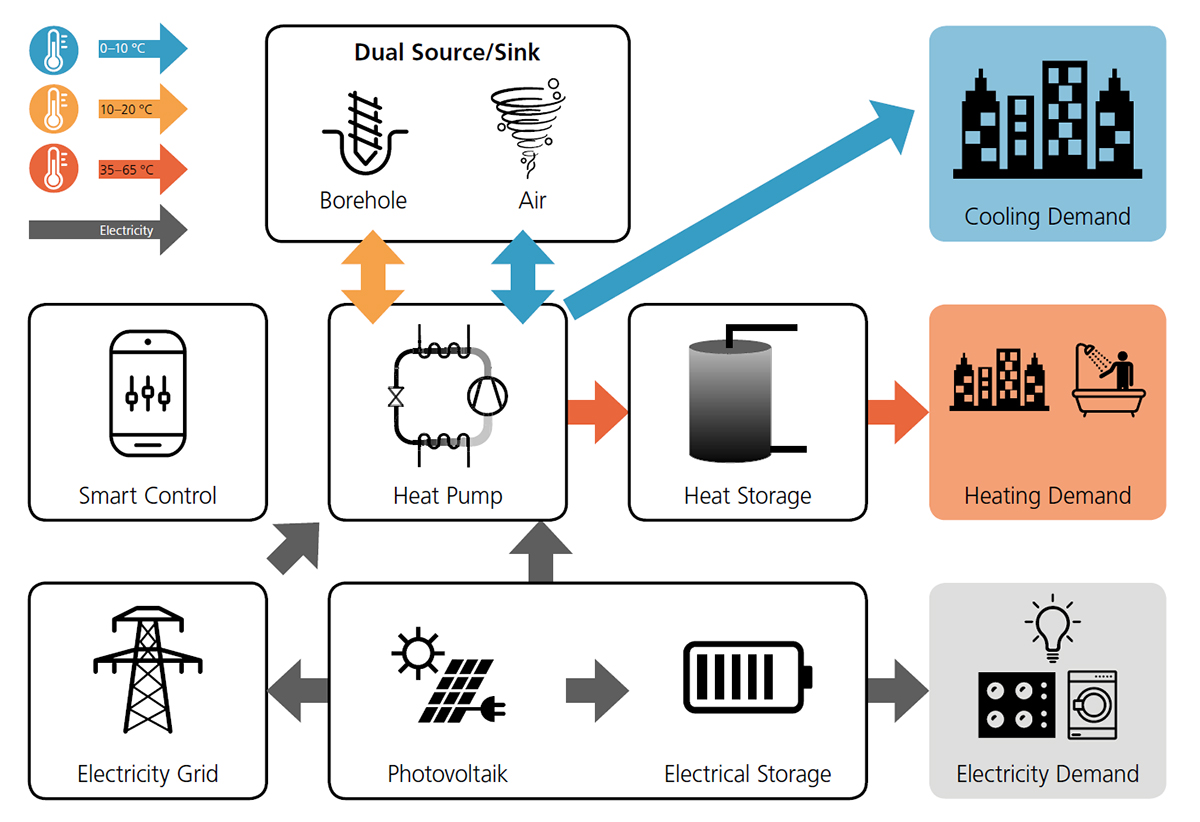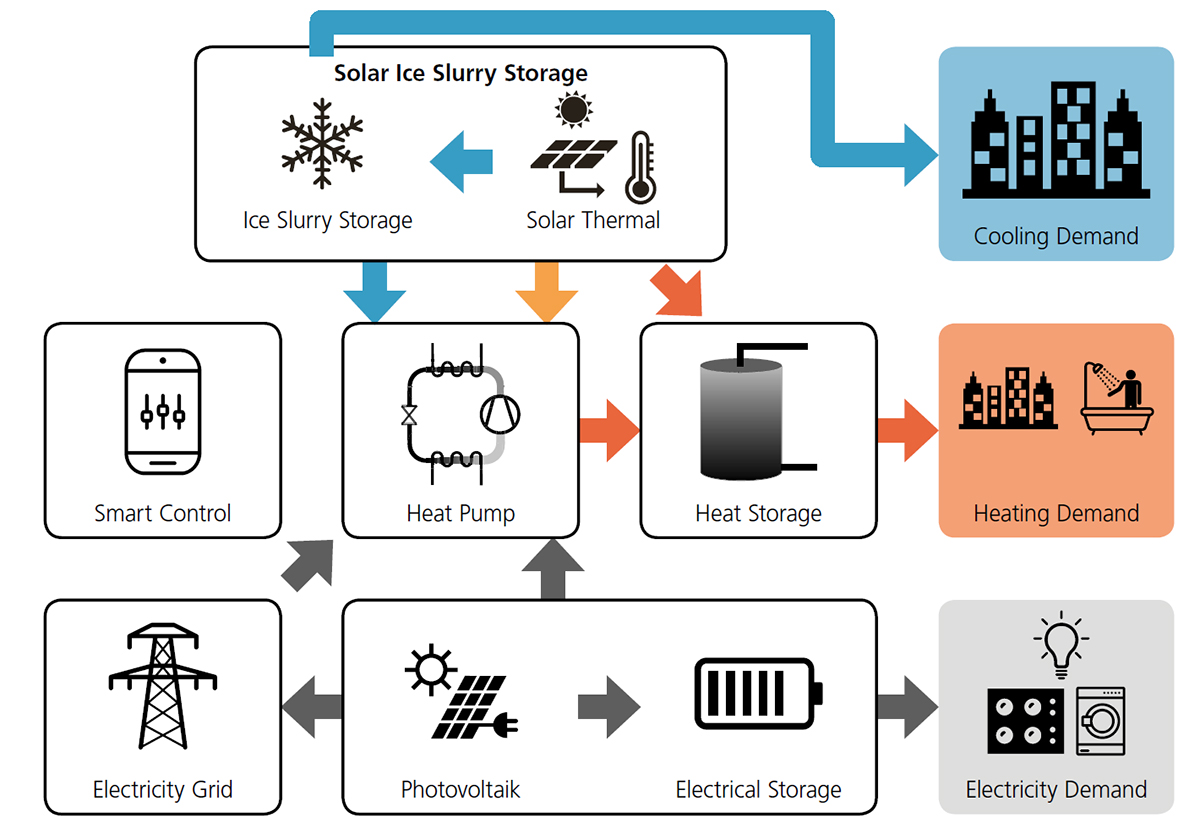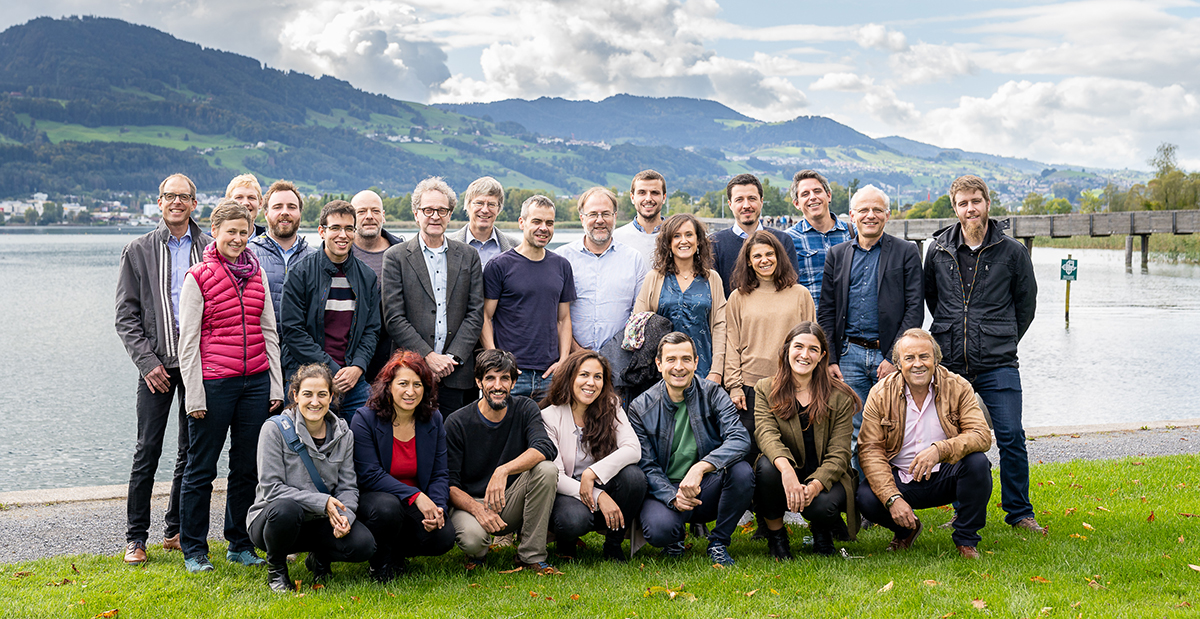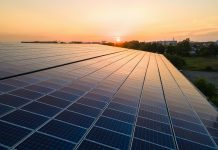Here, we learn about the TRI-HP Project that concerns trigeneration systems based on heat pumps with natural refrigerants and multiple renewable sources
Joining forces for a clean energy transition, the partners from the EU funded TRI-HP project employ a holistic approach for providing energy to multi-family residential buildings with a high share of renewables.
The TRI-HP Project
Funded by the European Union’s Horizon 2020 research and innovation programme, and coordinated by the SPF Institute of Solar Technology, the TRI-HP project focuses on developing affordable and efficient trigeneration systems able to provide heating, cooling and electricity. The project started on 1st March 2019 and involves 12 partners from seven different European countries (Belgium, Denmark, Germany, Norway, Spain, Sweden and Switzerland). During the four years of the project, seven R&D partners (SPF, TECNALIA, IREC, ISOE, NTNU, DTI, UASKA), together with three SMEs (HEIM, EFC, ILAG), a large industry partner (ALFA LAVAL) and a NGO (REHVA) are joining forces to develop the TRI-HP systems. The synergy of this multidisciplinary consortium, representative at the European level will be able to cover the whole value chain with strong scientific, technological and manufacturing skills, strengthened by societal expertise.

The TRI-HP systems are based on electrically driven natural refrigerant heat pumps coupled with renewable electricity generators (PV), and are using cold (ice slurry), heat and electricity storages. They will be providing heating, cooling and electricity to multi-family residential buildings with a self-consumed renewable share of 80%. Two system concepts are developed for two different combinations of heat sources: i) dual ground/air source (Fig. 1) and ii) solar with ice-slurry as intermediate storage (Fig. 2). These concepts combined with the developed heat pump types (carbon dioxide and propane) will lead to three complete systems (CO2-ice, propane-ice and propane-dual) that will be tested at the laboratory scale.

Energy innovation
The flexibility of TRI-HP systems is achieved by allowing three heat sources: solar (with ice/water as a storage medium), ground and ambient air. The innovations proposed will reduce the system installation cost by at least 10-15% compared to current heat pump technologies with equivalent energetic performances. Two natural refrigerants with very low global warming potential, propane and carbon dioxide, will be used as working fluids for adapted system architectures that specifically target the different heating and cooling demands across Europe. TRI-HP systems will include advanced controls to manage electricity, heat and cold in a way that optimises the system performance and increases its reliability via failure self-detection. The newly developed systems will find application in both new and refurbished multi-family buildings, allowing to cover a major part of Europe’s building stock.
The implementation of TRI-HP systems will reduce GHG emissions by 75% compared to gas boilers and air chillers. Stakeholders needs, building demand characteristics, local regulations and social barriers are considered for providing the most appropriate technical solutions.
Collaboration: Renewable energy technologies
TRI-HP has joined forces with eight other H2020 projects in the field of renewable energy technologies for buildings. The following projects have formed the cluster called “Building Energy Horizons” to better collaborate at technical and dissemination level: TRI-HP, GEO4CIVHIC, Hybrid BioVGE, IDEAS, Making City, RE-COGNITION, RES4BUILD, SolBio-Rev, SWS-HEATING.
Keep up-to-date with the TRI-HP Project
Stay up to date with TRI-HP project’s latest news and visit the TRI-HP website! Among others, you will find downloads available for all public deliverables. There you can find, for example, the reference energy demands (including SH, SC, DHW and electricity demand) that are used as a basis for the TRI-HP system simulations. There is also a link to the public repository of pytrnsys, a python framework to build, run and process TRNSYS simulations. Additionally, a very interesting report about state-of-the-art analysis of regulatory issues and key issues of societal acceptance of renewables is available for you to explore. This report focuses on societal impacts of renewable energy technologies for heating, cooling and electricity generation for different groups of actors, including a gender perspective.
For questions and requests, please use the contact form.
View the TRI-HP project on YouTube.
Please note: This is a commercial profile












